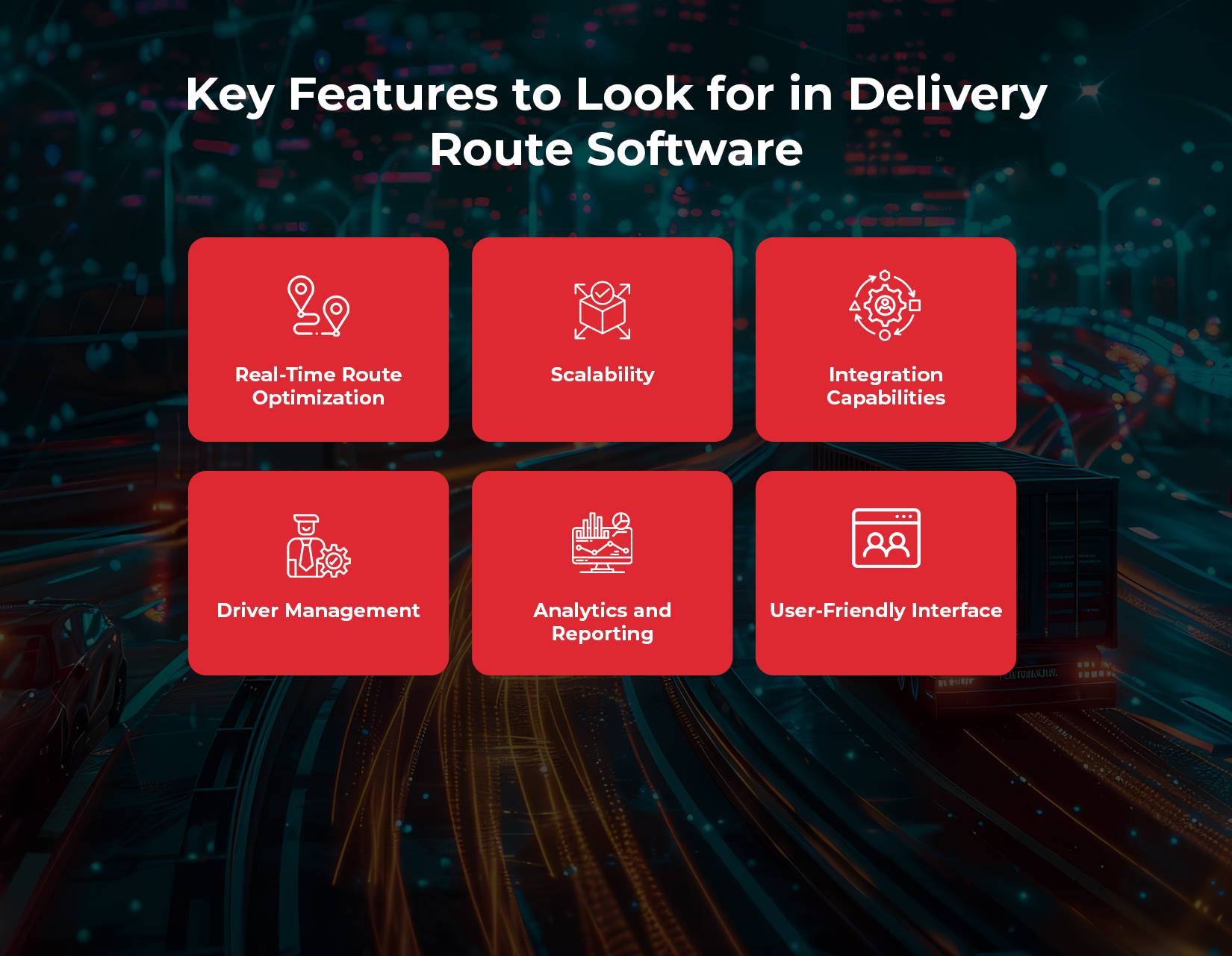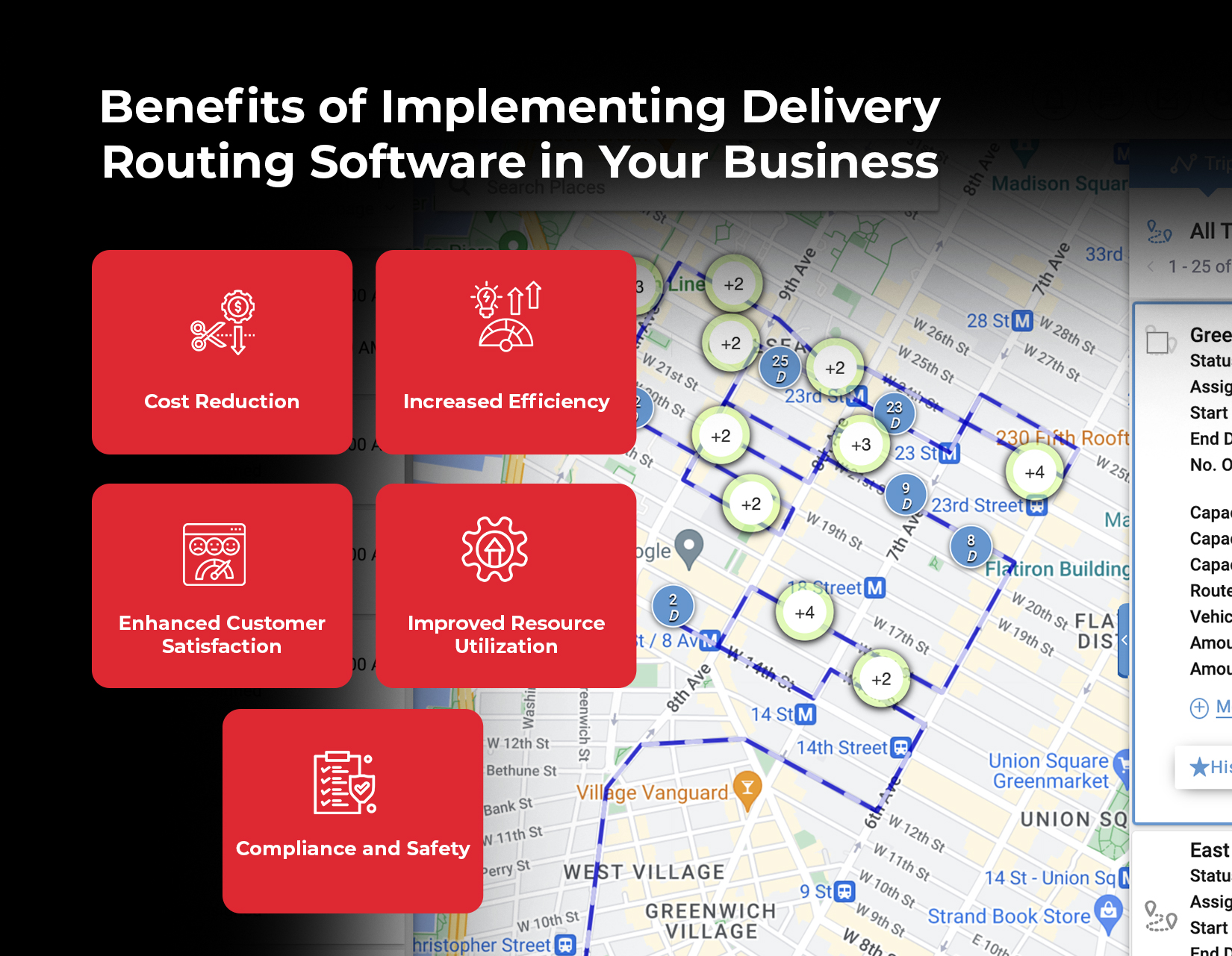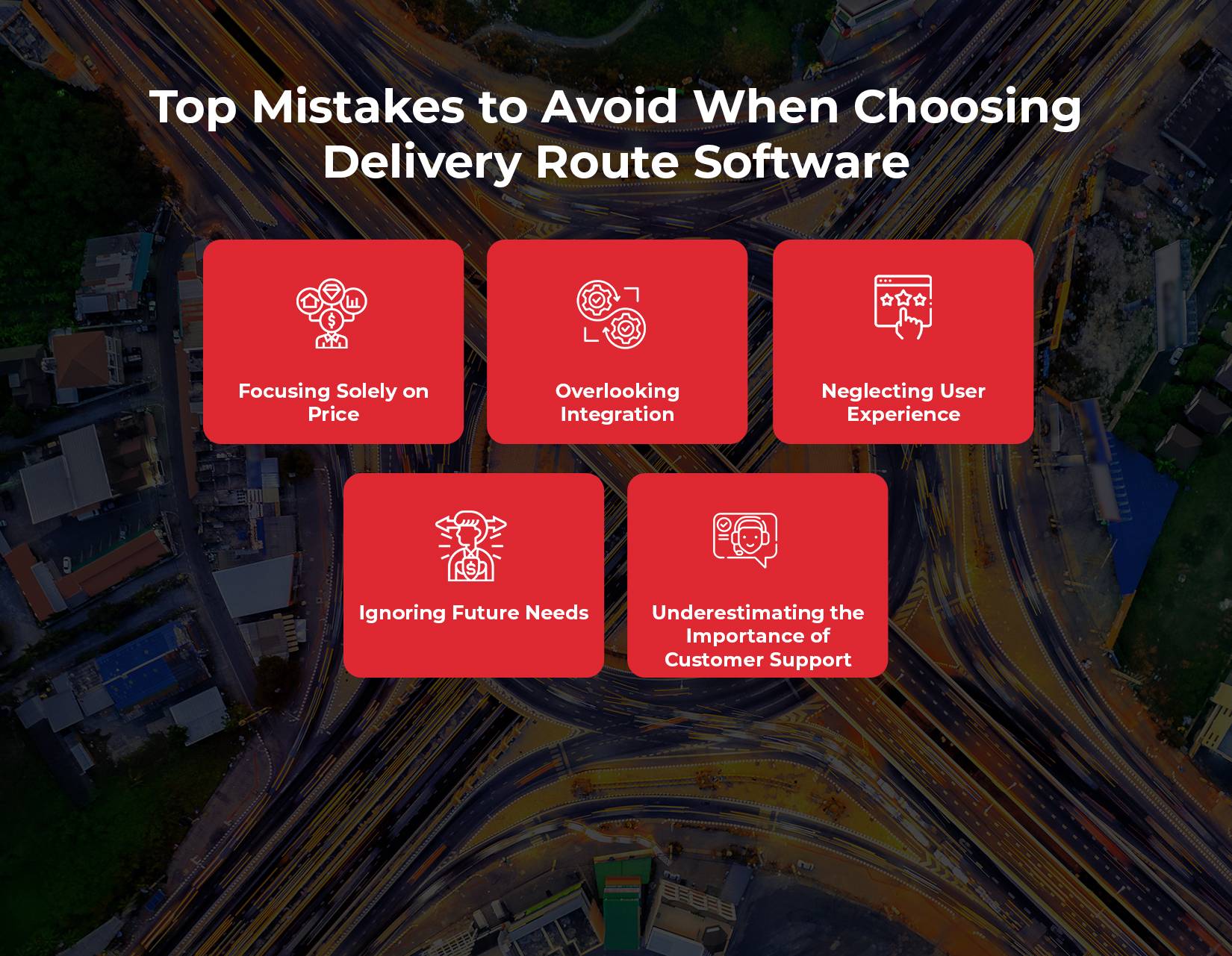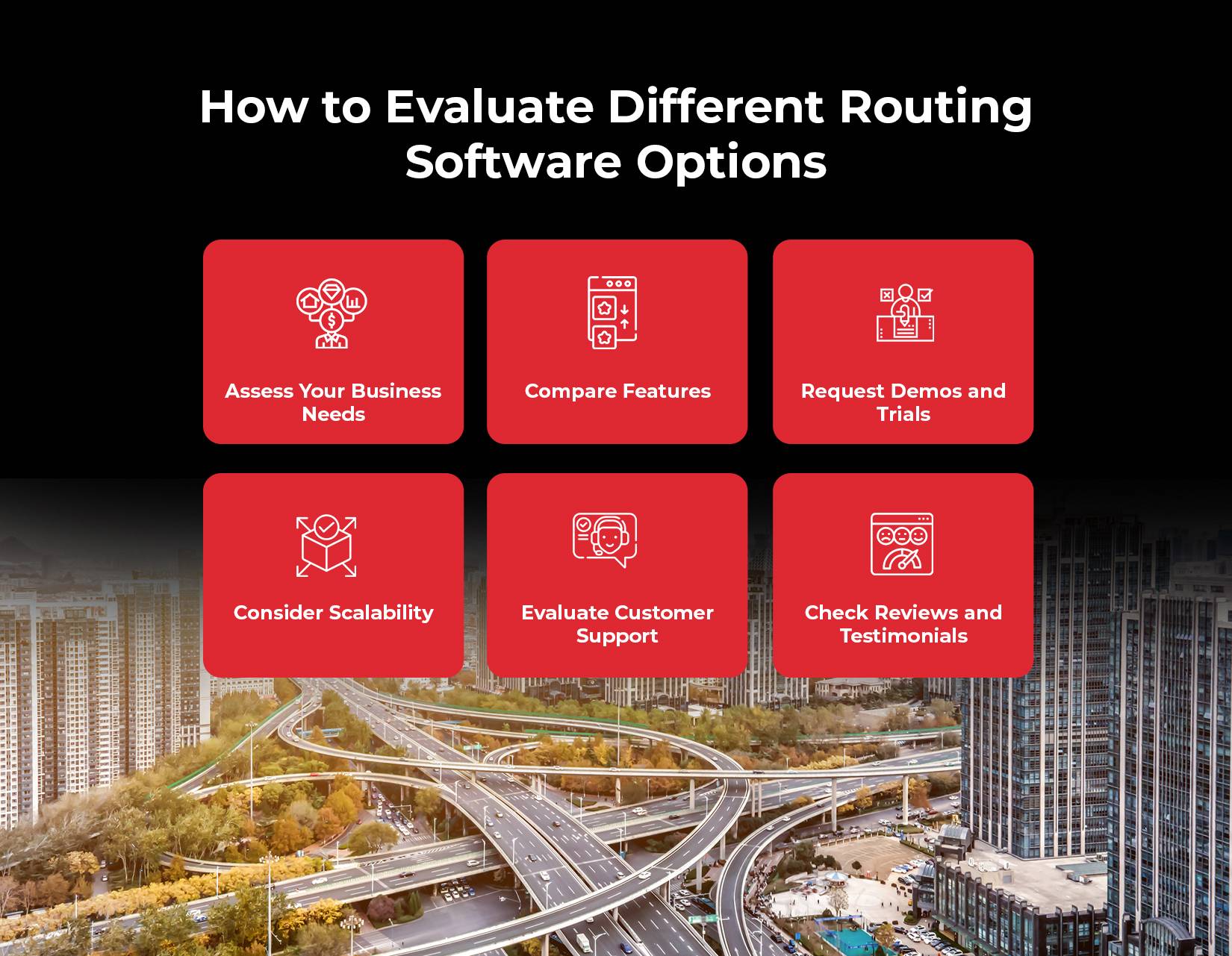
The Essential Guide to Choosing the Right Delivery Route Software for Your Business
In today’s fast-paced logistics environment, efficient delivery management is crucial to maintaining customer satisfaction and operational profitability. At the heart of this efficiency is Delivery Route Software—a solution designed to optimize routes, reduce delivery times, and enhance overall productivity. This guide delves into the importance of such software, key features to consider, the benefits it offers, how to evaluate different options, common pitfalls to avoid, and emerging trends in the industry.
The Importance of Delivery Route Software
Delivery Route Software has become a vital tool for businesses looking to streamline their delivery operations. The importance of this software lies in its ability to minimize delivery time, reduce fuel costs, and improve driver efficiency. As e-commerce continues to grow, customer expectations for faster deliveries have heightened. According to a study by Statista, the global e-commerce market is expected to reach $6.54 trillion by 2023, increasing the demand for quick and reliable deliveries.
In the U.S. alone, the logistics industry spent over $1.63 trillion on transportation costs in 2022, according to the Council of Supply Chain Management Professionals. By leveraging delivery routing software, companies can reduce these costs significantly—up to 20% on fuel, according to the American Transportation Research Institute.
Additionally, a study by Capgemini found that 55% of consumers will switch to a competitor if a company fails to meet their delivery expectations. This makes the implementation of route delivery software not just a cost-saving measure, but a critical component of customer retention.
Key Features to Look for in Delivery Route Software

When selecting delivery route software for your business, it’s essential to focus on features that will provide the most value. Below are a few key features to examine:
1. Real-Time Route Optimization:
The software should automatically adjust routes based on real-time traffic conditions, delivery priorities, and other variables. This warrants that deliveries are shaped in the most methodical manner
2. Scalability:
As your business grows, your delivery routing software should be able to scale with it. Look for a solution that can handle an increasing number of routes and deliveries without compromising performance.
3. Integration Capabilities:
The ability to integrate with other systems, such as your order management and customer relationship management (CRM) systems, is crucial. This enables flawless communication between different parts of your organization.
4. Driver Management:
Effective route delivery software should include tools for managing drivers, such as tracking their location, monitoring their performance, and ensuring compliance with regulations.
5. Analytics and Reporting:
Access to detailed analytics and reports can help you identify inefficiencies and make data-driven decisions. This feature is essential for continuous improvement in your delivery operations.
6. User-Friendly Interface:
The software should be easy to use, with a clear and intuitive interface. This is important for ensuring that your team can quickly adopt and effectively use the software.
A study by McKinsey & Company highlights that companies that have adopted advanced analytics as part of their delivery route planning software have seen a 20-30% increase in operational efficiency.
Benefits of Implementing Delivery Routing Software in Your Business

Implementing delivery routing software in your business can yield numerous benefits, from cost savings to enhanced customer satisfaction. Here are few of the most important advantages:
1. Cost Reduction:
By optimizing routes, the software reduces fuel consumption and vehicle wear and tear, leading to lower operational costs. A report by the American Transportation Research Institute found that optimized routing can reduce fuel costs by up to 20%.
2. Increased Efficiency:
Automated route planning saves time that would otherwise be spent on manual scheduling. This allows your team to focus on other critical tasks, such as customer service and inventory management. According to Frost & Sullivan, companies using routing software have seen a 10-15% reduction in route planning time.
3. Enhanced Customer Satisfaction:
With delivery route planning software, you can provide more accurate delivery windows and real-time updates to customers. This transparency fosters trust and can lead to higher customer retention rates. A PwC survey showed that 73% of consumers consider delivery experience a key factor in their purchasing decisions.
4. Improved Resource Utilization:
The software ensures that your fleet is used to its fullest potential, reducing the need for additional vehicles and drivers. This not only saves money but also reduces your carbon footprint. The Environmental Protection Agency (EPA) reports that optimized routing can decrease a fleet’s carbon emissions by up to 25%.
5. Compliance and Safety:
Many routing software solutions include features that help ensure compliance with regulations, such as Hours of Service (HOS) rules. This reduces the risk of legal issues and helps maintain high safety standards. The Federal Motor Carrier Safety Administration (FMCSA) has noted a 50% reduction in compliance violations in companies using automated route management systems.
Top Mistakes to Avoid When Choosing Delivery Route Software

Choosing the wrong delivery route software can lead to inefficiencies and increased costs. Here are some common mistakes to avoid:
1. Focusing Solely on Price:
While cost is an important factor, it shouldn’t be the only consideration. Cheaper software may lack essential features or scalability, leading to higher costs in the long run. A survey by Software Advice found that 63% of businesses that chose software based primarily on price reported dissatisfaction with their selection.
2. Overlooking Integration:
Failing to consider how the software will integrate with your existing systems can result in data silos and inefficiencies. Always prioritize solutions that offer seamless integration with your current tools.
3. Neglecting User Experience:
Software that is difficult to use can lead to low adoption rates and frustration among your team. Ensure the software has a user-friendly interface and provides adequate training resources.
4. Ignoring Future Needs:
Choosing software that only meets your current needs can be short-sighted. Consider how your business might grow and ensure the software can scale accordingly.
5. Underestimating the Importance of Customer Support:
Poor customer support can lead to prolonged downtime and unresolved issues. Always choose a provider with a strong reputation for customer service.
The Future of Delivery Route Planning Software: Trends to Watch
As technology continues to evolve, so too does delivery route planning software. Here are some trends to watch in the coming years:
1. AI and ML:
The integration of AI and machine learning in routing software is expected to enhance route optimization further. These technologies can analyze vast amounts of data to predict traffic patterns and identify the most efficient routes. According to McKinsey, companies that adopt AI-driven logistics solutions can expect a 15-25% increase in efficiency.
2. Autonomous Vehicle:
As autonomous vehicles become more prevalent, delivery routing software will need to adapt. This will include integrating with vehicle systems to enable fully automated deliveries. A report by Business Insider Intelligence predicts that by 2027, 10% of all vehicles on the road will be autonomous, necessitating advanced route delivery software.
3. Sustainability Initiatives:
With increasing pressure to reduce carbon emissions, route delivery software will likely include features that prioritize eco-friendly routes and support the use of electric vehicles. The International Energy Agency (IEA) projects that by 2030, 30% of all new vehicle sales will be electric, further driving the need for sustainable route optimization.
4. Real-Time Collaboration:
Future delivery route software may offer enhanced collaboration features, allowing drivers, dispatchers, and customers to communicate in real time. This will lead to more responsive and adaptable delivery operations.
5. Blockchain Technology:
The use of blockchain for tracking and verifying deliveries could become more common. This would enhance security and transparency in the supply chain, providing customers with greater peace of mind.
How to Evaluate Different Routing Software Options

With numerous delivery route software options available, selecting the right one can be challenging. Here’s how to evaluate your choices:
1. Assess Your Business Needs:
Start by identifying your specific requirements. Consider factors such as the size of your fleet, the volume of deliveries, and the complexity of your routes. This will help you narrow down the options that best meet your needs.
2. Compare Features:
Look at the features offered by different delivery route planning software solutions. Ensure that the software you choose includes all the essential features discussed earlier, such as real-time optimization and integration capabilities.
3. Request Demos and Trials:
Many provide demos or free trials. Take advantage of these opportunities to test the software in real-world scenarios. Pay attention to how easy it is to use and how well it integrates with your existing systems.
4. Consider Scalability:
Choose a software that can expand with your organization. It’s essential to select routing software that can handle an increasing number of deliveries as your business expands. Gartner predicts that by 2025, 75% of logistics operations will implement scalable, cloud-based routing solutions.
5. Evaluate Customer Support:
Reliable customer support is crucial, especially during the initial implementation phase. Make sure the provider offers robust support options, including training, troubleshooting, and regular updates.
6. Check Reviews and Testimonials:
Look for reviews and testimonials from businesses similar to yours. This can provide insights into how well the software performs in real-world applications and whether it delivers on its promises.
Top Delivery Route Planning Software in 2024
1. LogiNext Mile:
LogiNext Mile, preferred by F&B, CEP, CPG, transportation, retail, and eCommerce businesses, offers first, middle, and last-mile delivery optimization. It enhances efficiency through streamlined operations, real-time tracking, and more, making it ideal for diverse industries.
2. Routific:
Routific is a route optimization software provider that assists businesses and organizations in efficiently planning and optimizing their delivery routes. They offer a range of tools and services designed to enhance last-mile logistics and streamline delivery operations.
3. Route4Me:
Route4Me is a software platform that focuses on route optimization and planning for businesses involved in delivery and service operations. Its main goal is to assist companies in efficiently planning, optimizing, and managing their delivery routes.
4. OnFleet:
Onfleet is a software platform dedicated to last-mile delivery and logistics solutions. Its core mission is to assist businesses in optimizing their delivery operations, improving route efficiency, and enhancing the overall delivery experience for their customers.
5. OptimoRoute:
OptimoRoute is a robust logistics software designed to enhance route planning and scheduling for businesses involved in delivery or service operations. It provides a variety of features aimed at streamlining logistics processes, boosting efficiency, and cutting costs.
6. Zeo Route Planner:
Zeo Route Planner is a comprehensive route optimization software crafted to streamline and optimize delivery and service routes for businesses of all sizes. Featuring an intuitive interface and powerful tools, Zeo Route Planner enables businesses to enhance efficiency, lower fuel costs, and boost customer satisfaction.
7. FarEye:
FarEye is a logistics technology company that offers a broad array of solutions and services aimed at enhancing and optimizing supply chain and logistics operations for businesses. Their main focus is on improving last-mile delivery and providing greater logistics visibility.
Conclusion
Selecting the right delivery route software for your business is a critical decision that can significantly impact your operational efficiency and customer satisfaction. By understanding the importance of this software, knowing what features to look for, and avoiding common mistakes, you can make an informed choice that will serve your business well into the future. Keep an eye on emerging trends to ensure your business remains competitive in an ever-evolving logistics landscape. Click on the red button below to book a demo with LogiNext Mile and make the informed choice of choosing the best delivery route software for your business.
95







@LogiNext